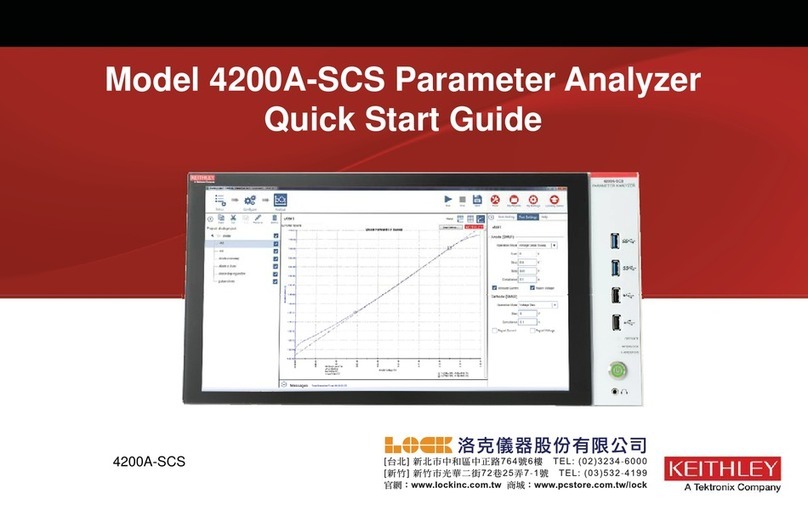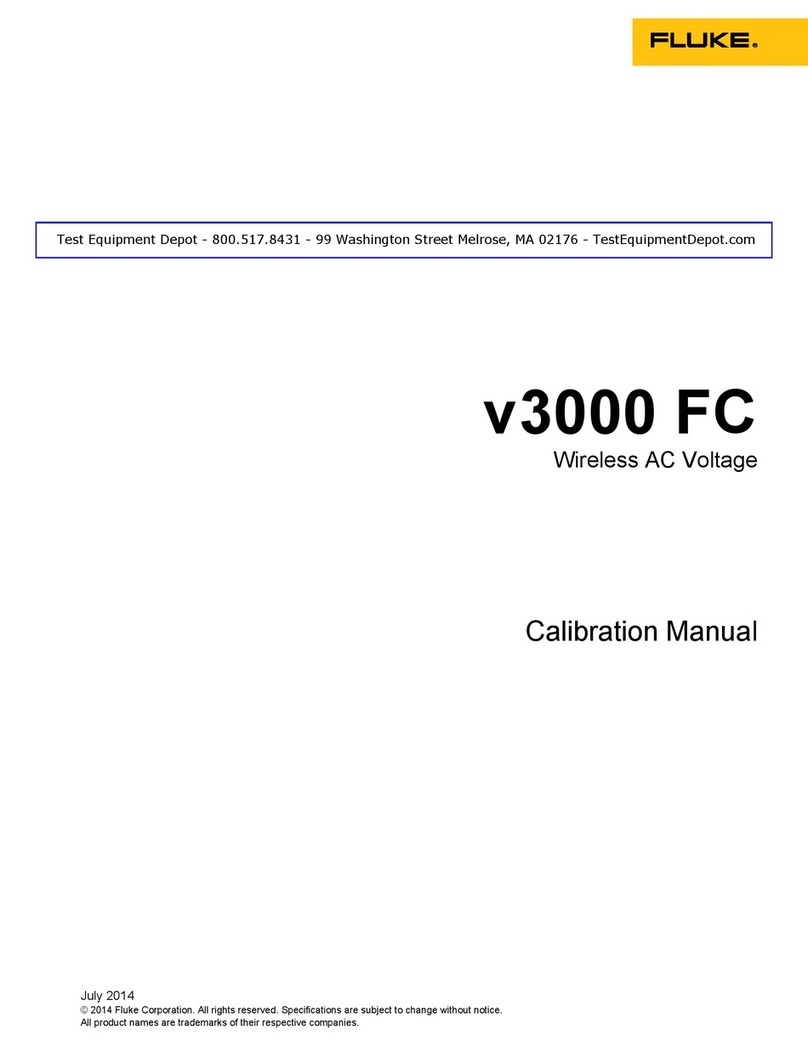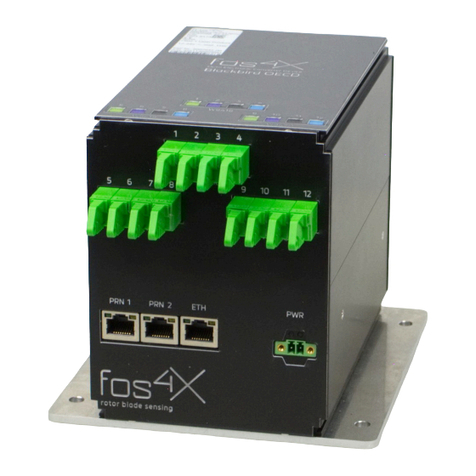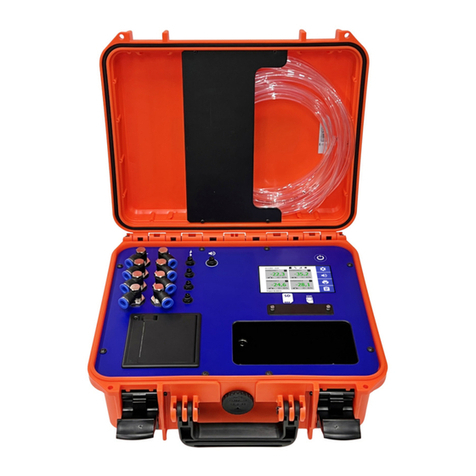GEONiN DM-100 User manual

MANUAL ESTACION TOTAL
GEONiN DM-100

Preface
Thank you for purchasing our DM-100 series total station! This
manual is your good helper, please read it before operating the instrument
and keep it properly.
Product Validation
In order to get our best service, please give the feedback about the
version, number, purchasing date of the instrument and your valuable
suggestions to us after you purchase our product.
We will attach great importance to every piece of advices from you!
We will pay much attention to every detail of our products!
We will make great efforts to provide better quality!
Notice: We reserve the right to change the technical parameters during
updating and improving our products and we may not announce you in
advance. The Pictures in this manual is for reference only, please in kind
prevail.
1

Features
Rich Features--our total station carries abundant surveying application,
at the same time has the functions of data storage, parameter settings and
etc. It‘s suitable for all kinds of professional measurements.
Absolute code disc
Equipped with absolute code disc, the instrument can measure after
switched on .Even if reset the battery halfway, the azimuth information
will not be lost.
A high-capacity RAM Management
It serves an easy management for file system, including the increase,
deletion and transmission of data.
Non-prism distance measuring
With non-prism distance measuring, this series total station can be
directly to all kinds of material, different colors of objects (such as the
structure of the walls, poles, wires, cliff wall, mountain, clay, wood, etc.)
for long, fast, high precision measurement .This function is especially for
the measurements of targets that cannot be accessed.
Special measurement program
Our total station is equipped with some special measurement program
to meet the needs of professional measuring, such as Remote Height (REM)
Measurement, Offset Measurement, MLM (MLM Measurement),
Resection, Area measurement calculation, Roadway design and staking out.
Changeable eyepiece
As the eyepiece is changeable, it is convenient to be equipped with
diagonal eyepiece, which makes it easy to observe the zenith direction
high-rise buildings
Laser plummet
Easy to direct the station point and free station
Notice:
Don‘t look directly into the sun with the objective lens;
Do not leave the instrument at extreme temperatures (too high or too
low) or use it when thermal shock;
When you don‘t use the instrument, should load it in the box and
place it well-ventilate and dry place,and pay attention to the shock-proof
,dust-proof and damp-proof;
In order to get good precision, you should leave the instrument in the
box to make it adapt the environment when there is a great difference in
temperature between working environment and storage environment
The battery should be unloaded and charged once a month for
extending its life. If not ,the instrument will not be used for a long term.
When transporting the instrument, you should store it in box and be
careful to avoid extrusion, collision and violent vibration. A soft mat
2

around the boxes is required for long-distance transport.
When setting the instrument, it‘s better to work with high-quality
wooden tripod for stability and measurement accuracy.
In order to improve the precision of Non-Prism measurement, please
keep the object lens clean. When cleaning exposed optical devices, please
wipe them gently with absorbent cotton or lens paper only.
After using instrument, please sweep away the surface dust with
flannelette or hairbrush. Do not switch on the device when it has got wet
by rain. Please wipe it dry with clean soft cloth and put it in ventilated
place for a period time to make the equipment fully dry before using and
packing.
Please check out that the indicators, functions, power supply, initial
setting and correction parameters of the instrument meet the requirements
before operating.
If discovering the abnormal function of the instrument, non-
professional maintenance personnel are not allowed to disassemble the
instrument without authorization, in case of any unnecessary damage.
As a safety precaution, do not aim at eyes directly when using the
instrument.
Security Guide
Please pay attention to the following security matters when using the
instrument with non-prism.
Warning:
Total station is equipped with rangefinders with laser level 3R/IIIa,
which is recognized by the following logo recognition at the horizon -axis
locking knob‖ of the instrument, saying ―Class 3A Laser Product‖. The Total
Station is classified as Class 3R Laser Product and abides by the class of Laser
Product according to IEC Standard Publication 60825-1:2001.
For Class 3R/IIIa Laser Product, its emitted laser with wavelength
between 400nm and 700nm can be at most 5 times of that of Class 2/II.
Warnings:
Never star at laser beam constantly, it could cause permanent eye
damage.
Precautions:
Do not see directly into laser beams nor point laser to persons.
The reflected beams is the necessary for the instrument measurement
signal.
Warnings:
It‘s dangerous to use Class 3R Laser instrument improperly.
Precautions:
In order to avoid causing damage, the proper precautions should be
taken for you and control well the distance (in accordance with the
standard ―IEC60825-1:2001‖) that may occur hazards.
The following is the main part of the explanation of the IEC
Standard
3

Publication:
Class 3R Laser Products are used in outdoors and on building site
(with non-prism measurements).
The personnel who are specially trained, qualified and authenticated
are allowed to stall, adjust and operate these laser instruments.
b. Set up corresponding laser warning signs in the use of area range.
c. Prevent anyone from looking directly into laser beams or watching
the laser beams with optical device.
d. In order to prevent laser damage to people, the laser beams should
blocked at the end of the working route. In the limited area (★Hazardous
distances) where the laser beams through ,the laser beams should be
terminated when there are some activities.
e. the route which laser beans through must be set higher or lower
than the sight of people.
f. When the instrument not in use, please make it safekeeping and
storied. Unauthorized person should not use it.
g. To prevent exposure to laser beam accidentally, such as mirrors,
metal surfaces, windows, be careful as the flat surface of the mirror and
concave mirror.
*The hazardous distance refers to the maximum distance which is
from beginning of the laser beams to the laser beam weaken until it does
not harm people. The built-in rangefinder products equipped with Class
3R/IIIa laser whose hazardous distance is 1000 meters (3300feet),and in
the distance, the strength weakens to a Class 1 laser (sightseeing beam eyes
couldn't hurt).
4

Content
1. Use of instrument ........................................................
10
2. Names and functions of the components ....................
11
2.1 Names of the components ....................................................
11
2.2 The information of the displays ............................................
13
2.3
Functional keys under the basic measurement mode ...........
17
2.3.1 Angle mode (including three pages) ..........................
17
2.3.2 Distance measurement mode .....................................
18
2.3.3 Coordinate measurement mode .................................
19
2.3.4 Explanation of saving data ........................................
20
2.4
Star key [
★
] mode ...............................................................
20
3. Initial setup ..................................................................
22
3.1 On & Off ..............................................................................
22
3.2
Set up the tilt correction of horizontal and vertical angles ... 22
3.3
Set up the target Type ...........................................................
22
3.4
Set up the Reflecting Prism Constant. ..................................
22
3.5
Signal....................................................................................
23
3.6
Set up the Atmospheric Correction ......................................
23
3.6.1 Set up the Atmospheric Correction value (ppm) directly
....................................................................................................
24
3.6.2 Calculate the Atmospheric Correction out with
temperature and pressure sensor.................................................
24
3.7
The Correction of the Atmospheric refraction and the Earth
Curvature ............................................................................................
24
3.8
Set up the minimum reading of the angle .............................
25
3.9
Set up the minimum reading of the distance ........................
25
3.10 Setup of Automatic Shutdown ...........................................
25
3.11 Set rectangle beep ...............................................................
26
3.12 Set up the Addictive Constant and the Multiplying Constant
............................................................................................................
26
3.13 Selecting Data File .............................................................
26
5

4. Preparations before measurements .....................
28
4.1
Unpacking and storing instruments ......................................
28
4.2
Set up the instrument ............................................................
28
4.2.1 Using plummets to center and level (align) ...............
28
4.2.2 Using centering device to center ...............................
29
4.3
Loading and unloading of battery ........................................
30
4.4
Reflecting Prism. ..................................................................
31
4.5
Loading and unloading of the pedestal .................................
31
4.6
Adjusting eyepiece lens of the telescope and aiming the target.
............................................................................................................
31
4.7
Entering letters and numbers ................................................
31
4.8
Notice for using U disk ........................................................
34
5. Angle mode ..................................................................
35
5.1
Save ......................................................................................
35
5.2
0set .......................................................................................
35
5.3
Hset ......................................................................................
36
5.4
Hold ......................................................................................
36
5.5 Angle by repetition ...............................................................
36
5.6
Slope (V%) ...........................................................................
38
5.7 H-Bz .....................................................................................
38
5.8
L/R........................................................................................
39
5.9 V mode .................................................................................
39
6. Distance mode .............................................................
40
6.1
Save ......................................................................................
40
6.2
Meas. ....................................................................................
40
6.3 Mode ....................................................................................
40
6.4
Offset ....................................................................................
41
6.5
Stake out (S.O) .....................................................................
41
7. Coordinate mode .........................................................
42
8. Offset mode ..................................................................
45
8.1
Offset (Angle) ......................................................................
45
6

8.2 Offset (Dist1) ........................................................................
46
8.3 Offset (Dist2) ........................................................................
47
8.4 Offset (Plane) .......................................................................
48
8.5 Offset (Column) ...................................................................
49
9. Menu ............................................................................
52
9.1 Surveying .............................................................................
52
9.1.1
Operation ...................................................................
52
9.1.2
Preparation ................................................................
52
9.1.3
Station and backsight .................................................
53
9.1.3.1 Example for set station ...........................................
54
9.1.3.2 Example for setting angle .......................................
55
9.1.4Measurement ..............................................................
57
9.2Staking out.............................................................................
59
9.2.1
Staking out points ......................................................
59
9.2.2
Polar coordinates .......................................................
62
9.2.3
Resection ...................................................................
63
9.3File manager ..........................................................................
66
9.3.1
File Dialogbox ...........................................................
66
9.3.2
Import ........................................................................
69
9.3.2.1 Import from PC ......................................................
70
9.3.2.2 Import from USB ...................................................
71
9.3.3
Export ........................................................................
72
9.3.3.1 Export to PC ...........................................................
72
9.3.3.2 Export to USB ........................................................
73
9.3.3.3 Export with Mini USB port ....................................
74
9.3.4
Format disk ................................................................
75
9.3.5
Information of disk (MenInfo) ..................................
75
9.3.6
Update .......................................................................
75
9.4 Program ................................................................................
77
9.4.1
Remote height (REM) ...............................................
78
9.4.1.1 ―Input T.H‖ Mode ..................................................
78
7

9.4.1.2 ―Without T.H‖ ........................................................
79
9.4.2
Resection ...................................................................
80
9.4.3 MLM .........................................................................
80
9.4.4
Coord.Z .....................................................................
81
9.4.5 Area measurement .....................................................
83
9.4.6
Projection ..................................................................
84
9.4.7 Roadway ....................................................................
85
9.5 Options .................................................................................
85
9.6 Adjust
...................................................................................
87
9.6.1
Calibrate I.E ..............................................................
87
9.6.2
Calibrate TILT:X .......................................................
87
9.6.3
Calibrate TILT:Y .......................................................
89
9.6.4
Calibrate TILT: Zero .................................................
90
9.7 Config (Instrument constant)................................................
91
9.8 Select code file .....................................................................
91
9.9 Gird scale .............................................................................
92
9.10 Communication ..................................................................
92
10. Roadway ....................................................................
93
10.1 Inputting Roadway .............................................................
93
10.1.1 Horizontal alignment ...............................................
93
10.1.1.1 Element method ....................................................
93
10.1.1.2 Intersection method ..............................................
95
10.1.2 Vertical alignment ....................................................
96
10.2 Stake out (road) ..................................................................
97
10.2.1 Selecting Roadway File ...........................................
98
10.2.2 Setting station and BBS(backsight point) ................
98
10.2.3 Stake out road ..........................................................
99
11. Adjustments and Corrections .................................
101
11.1 Tubular Level ...................................................................
101
11.2 Circular Level ...................................................................
101
11.3 Reticle of the telescope .....................................................
101
8

11.4 The Perpendicularity of Collimation axis and Cross axis (2C)
..........................................................................................................
102
11.5
Vertical plate index zero automatic compensation ...........
103
11.6
Vertical index error (angle i) and set vertical index 0 .......
104
11.7 Centering device ...............................................................
104
11.8 Addictive constant (K) ......................................................
105
11.9
The parallelism of collimation axis and photoelectricity axis
..........................................................................................................
106
11.10 Non-prism ranging .........................................................
107
12. Technical parameters ..............................................
108
Appendix A File format introduction (GEONiN)
..........
110
Appendix B Bi-directional communication .................
111
9

1. Use of instrument
The total station is such an instrument that measures the azimuth and
distances to destination and can calculate the destination point coordinates
automatically. It plays an important role in the economic construction and
national defense construction. General Survey, exploration and mining of
minerals, the construction of railways, roads, bridges, irrigation, urban
planning and construction is driven by electronic total station
measurements. In the building of national defense, such as battlefield
preparations, harbor, forts, airfields, bases and military construction
projects, and so on, must be based on a detailed and accurate geodetic. In
recent years, electronic total station is a large precision engineering,
shipbuilding and aviation industries and other aspects of effective tools for
precise positioning and installation.
The series total station is equipped with absolute code dial system,
integrated-circuit-control-board ranging item and microcomputer for
measurements of angle and distance and for calculation, display, depositing
and etc. It can exhibit horizontal and vertical angle, slope and horizontal
distance and altitude difference simultaneously. Furthermore, it can be set
to measure under different mode (e.g. Angle mode, Distance mode).It is
even designed for you specializing in construction projects with non-prism
ranging. The non-prism ranging can be comprehensively used in measuring
three-dimensional coordinates, position determination, remote elevation
measurement (REM), verticality, pipeline positioning, cross-section
measurement etc. It also meets requirements for trigonometrical control
survey, topographic survey, cadastre and real estate survey.
10

2. Names and functions of the components
2.1 Names of the components
Handle
Coarse sighting device
Objective lens
Vertical clamping and
tangent screw
Plate level
Display
keys
serial port connector
SD card port
Base
11

Battery
Focusing knob
Horizontal axis center
eyepiece
Horizontal clamping and
tangent screw
Base Leveling screw
12

2.2 The information of the displays
Symbols on the keyboard
Keys
Name
Function
Angle
In the basic interface,enter the angle
ANG
measurement . Under other modes, move
measurement
the cursor up or up to select the options.
In the basic interface,enter the distance
DIST
Distance
mode
measurement
In the other modes,Move the Cursor down
or down to select the options.
In the basic interface,enter the coordinate
CORD
Coordinate
mode
measurement
In the other modes, move the cursor left or
page up.
Under the basic measurement
MENU
Menu key
interface,down to the menu interface.
Under the other modes ,move the cursor
right or page down
Power key
Power on/off
13

The characters at the bottom line of the
F1~F4
Soft Keys
display indicate the meaning of the soft
keys.
0~9
Number keys
Input numbers or characters or choose the
menu
In any measurement interface, you can
★
Star key
enter the star key interface .You can set the
contrast, lighting compensator and
parameters of distance measuring .
Receive and save the data input in the
The side
Enter
dialogue and end the dialogue.
key
Save the current measurement data under
the basic measurement interface.
ESC
Exit /quit
End the dialogue box without saving the
input,and return to the previous step
◄►
Left /right
change the option in the select box
Data list page
▲▼
Up /down
Move the Cursor up and down in order.
Turn the page under the basic measurement.
Input number and characters and select one
0
~
9
Number
of menu.
―0‖: Enter the electronic bubble interface
under the basic measurement.
·~ -
Symbols
Enter symbols, decimals and signs;
Enter the interface for input height.
Symbols on the display
Symbols
Indication
Vz
Zenith Mode
Vo
The mode that the vertical is displayed as zero when the
telescope is level in normal
Vh
Vertical angle Mode (it is 0°00′00″when the telescope is
level. The angle of elevation is positive and the angle of
depression is negative.)
V%
Slope Mode
HR
Horizontal angle (right angle). dHR means the angle
difference of setting out.
HL
Horizontal angle (anticlockwise increment)
HD
Horizontal distance. dHD is to stake out horizontal
distance difference.
VD
Elevation difference. dVD is to stake out difference
between elevation differences.
14

SD
Slope distance. dSD is to stake out differences between
slope distances.
N
Northing. dN is to stake out differences between
north-coordinates.
E
Easting. dE is to stake out differences between
East-coordinates.
Z
Elevation. dZ is to stake out differences between
Z-coordinates
EDM(Electronic Distance Measurement) is in progress.
m
Unit in meters (metric units)
ft
Units in feet
fi
Units in American feet
M
Units inMIL
X
The magnitude of which is along the baseline in a point
projection measurement. The positive direction is from the
starting point to the terminal.
Y
The magnitude of which deviates from the base line
horizontally in a point projection measurement.
Z
Altitude of the target in a point projection measurement.
MdHD
Maximum error of evaluated distance
Reference functions of common soft key
Soft key
Functions
reference
B.S
(Backspace)Delete one last character on the left of
the inserter in the edited column.
Clear
Delete all typed in the edited column.
Enter
End up the input in the current edited column and the
inserter goes to the next column. If there‘s only one
or no edited column in the dialogue box, the soft key
‗Enter‘ is also used to accept the input and exit the
dialogue box.
Input
Go to Coordinate dialogue box and enter the
coordinates with keyboard
M.Pt
Retrieval coordinates of points from measured file
K.Pt (Known)
call coordinates of points from coordinate file
Search
List the points in the current coordinate file to
provide to select the number for you.
15

View
List out details of the current record
Info.
Displays the name, code and coordinate of the
current station and back-sight station.
Settings
Set the height of the instrument and the target
STA
Enter coordinates of the station where instrument is
placed.
BBS
Enter coordinates of the point where the target is.
Meas
Start rangefinders to measure distance
Save
Start rangefinders when being under the Coordinate
and Distance mode. Then save the result of this
measurement and name of point which is added by
one automatically. The result cannot be saved when
the compensator is over .(Tilt over)
Comp.
Display the inclination (tilt) of the vertical axis
Light
Turn on or off the backlight and the illuminating
brightness of reticle (at the same time).
Para.
Set the atmospheric parameters, prism constant and
signals.
16

2.3 Functional keys under the basic measurement mode
2.3.1 Angle mode (including three pages)
Vz: 278°12′23″
HR: 159°54′05″
Save 0set Hset 1/3
F1
F2
F33
F4
Vz: 278°12′23″
[F4] HR: 159°54′05″
Hold
Rep
V%
2/3
F1
F2
F33
F4
[F4]
Vz:
278°12′23″
HR:
159°54′05″
[F4]
H-Bz
R/L
Vmode
3/3
F1
F2
F3
3
F4
Page
Soft key
Reference
Function
F1
Save
Record the measured angle to the
selected file.
F2
0set
Set the horizontal angle as 0°
Set your desired horizontal angle
by inputting ,but the angle should not
1
F3
Hset
be greater than 360°
F4
1/2
Display the second page of the
soft key functions
F1
Lock the horizontal angle
2
Hold
readings.
F2
Repeat to measure the horizontal
Rep
angle
F3
Switch between Vertical angle
V%
and slop
F4
Display the third page of the soft
2/3
key functions
F1
Set the beep on or off when the
H-Bz
horizontal angle is 0°, 90°,180°,
270°
F2
R/L
Switch between HR (horizontal
17

right/ clockwise) and HL (horizontal
left/ anticlockwise) mode
F3
Vertical Angle Mode (altitude
VA
angle(Vh), Zenith(Vz)
F4
3/3
Display the first page of the soft
key functions.
The key [★] is used to set contrast, light, compensator and parameters
of distance measurement . It can work under the basic modes.
2.3.2 Distance measurement mode
Vz: 278°12′23″
HR: 159°54′05″
SD:
m
HD:
m
VD:
m
Save
Meas
Mode
1/2
F1
F2
F33
F4
Vz: 278°12′23″
[F4] HR: 159°54′05″
SD:
m
[F4]
HD:
m
VD:
m
Offset
S.O
m/f/i
2/2
F1
F2
F33
F4
Page
Soft key
Reference
Function
1
F1
Save
Start distance measurement and
record the measured data into the selected
files (measurement file ‗File(.MEA)‘ and
coordinate file ‗File(.COO)‘are selected
in surveying function ).
F2
Meas
Start Distance Mode
F3
Mode
Switch between four distance
measurement mode (single accurate
measuring (sngl)/ repeated accurate
measuring (rept)/ continue accurate
measuring (cont)/ tracking (track))
F4
P1/2
Display the second page of the soft key
functions
F1
Offset
Start offset measurement (eccentric
measurement)
F2
Stake
Start staking out
F3
m/f/i
Switch distance units between meters,
2
feet, feet&inch.
F4
2/2
Display the first page of the soft key
functions
18

2.3.3 Coordinate measurement mode
Vz:
278°12′23″
Vz:
278°12′23″
HR:
159°54′05″
HR:
159°54′05″
N :
m
N :
m
[F4]
E :
m
E :
m
Z :
m
Z :
m
Save
Meas
Mode
1/3
Config
BBS
STA
2/3
F1
F2
F3
3
F4
F1
F2
F3
3
F4
Vz:
278°12′23″
[F4]
HR:
159°54′05″
N :
m
[F4]
E :
m
Z :
m
Ofset
S.O
Aver.
3/3
F1
F2
F3
3
F4
Page
Soft key
Reference
Function
F1
Save
Start coordinate measurement and record
the measured data into the selected files
1
(measurement file ‗File(.MEA)‘ or
coordinate file ‗File(.COO)‘ are selected
in surveying function).
F2
Meas
Start coordinate measurement
F3
Mode
Switch between four distance
measurement mode [single accurate
measurement (sngl)/ repeated accurate
measuring (rept)/ continue measuring
(cont)/ tracking (track)]
F4
1/3
Display the second page of the soft key
functions
F1
Setting
Set target height and instrument height
F2
BSS
Set coordinates of BSS (back-sight point)
2
and back-sight angle
F3
STA
Set coordinates for station
F4
P2/3
Display the third page of the soft key
functions
F1
Ofset
Start offset measurement (eccentric
measurement)
3
F2
S.O
Stake out coordinates
F3
Aver.
Set the times of average measurement
19
Table of contents
Popular Measuring Instrument manuals by other brands

LOVATO ELECTRIC
LOVATO ELECTRIC DMED301MID instruction manual
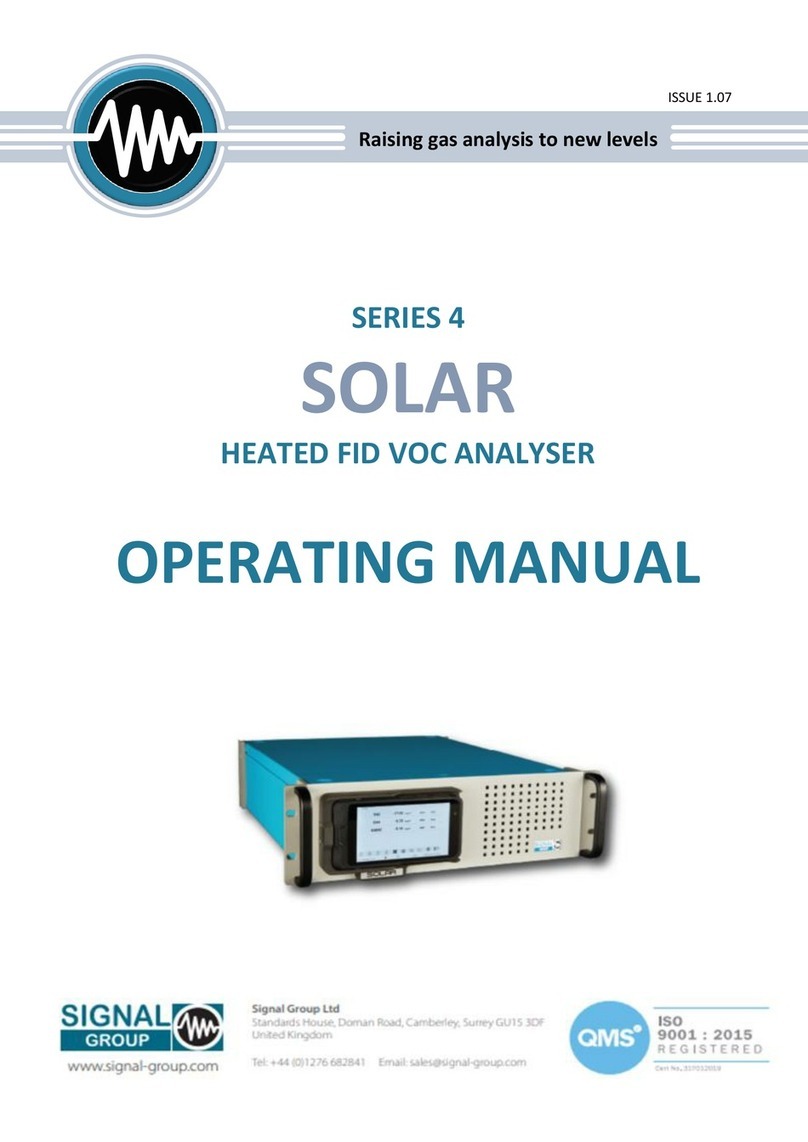
Signal
Signal SOLAR 4 Series operating manual

Endress+Hauser
Endress+Hauser Hart Micropilot FMR60B Brief operating instructions
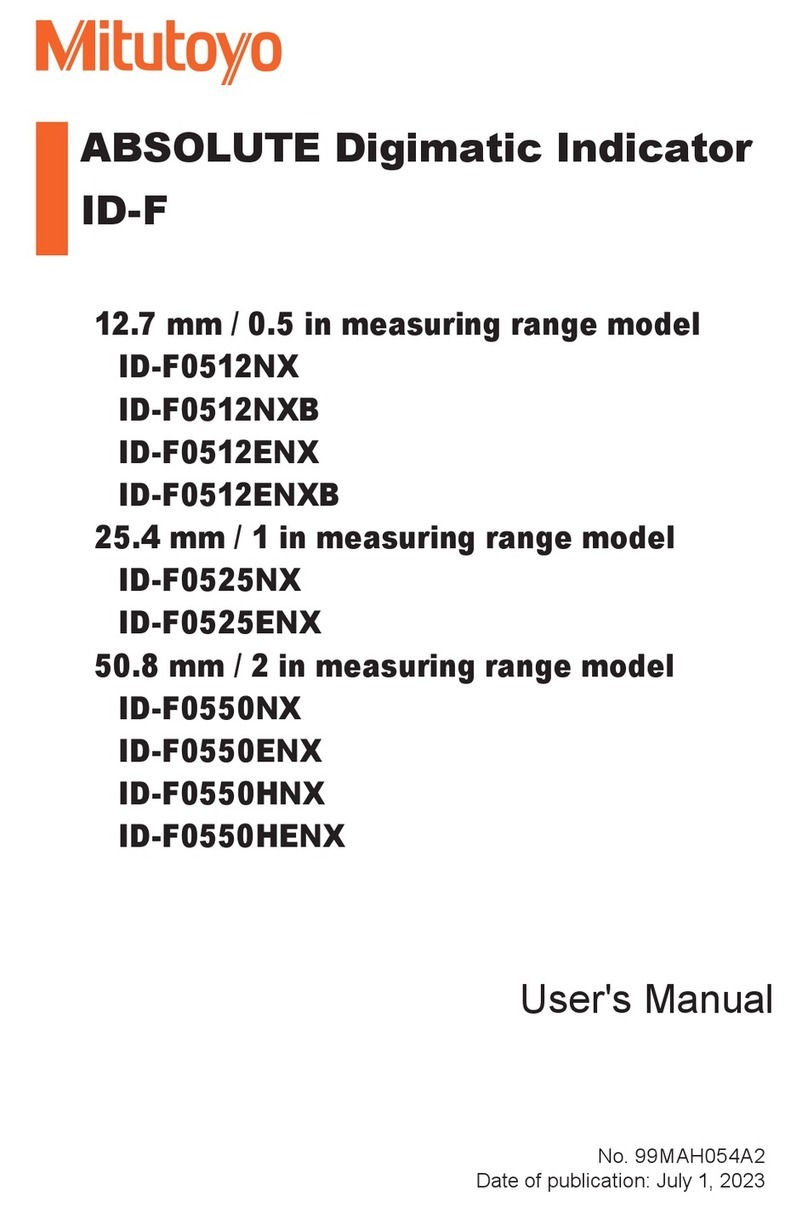
Mitutoyo
Mitutoyo ABSOLUTE ID-F user manual

PCB Piezotronics
PCB Piezotronics 3741F1210G Installation and operating manual
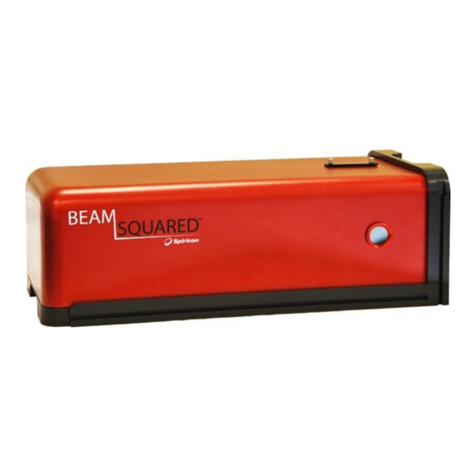
OPHIR
OPHIR BeamSquared user guide
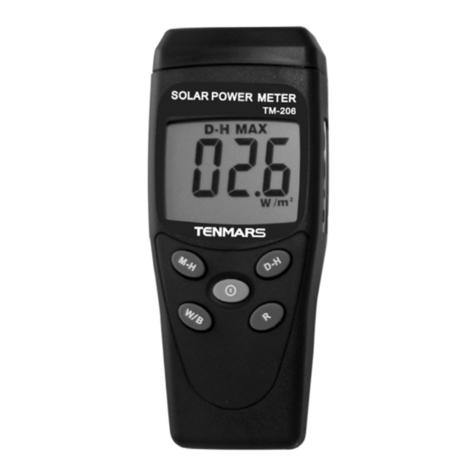
Tenmars
Tenmars SM206 user manual
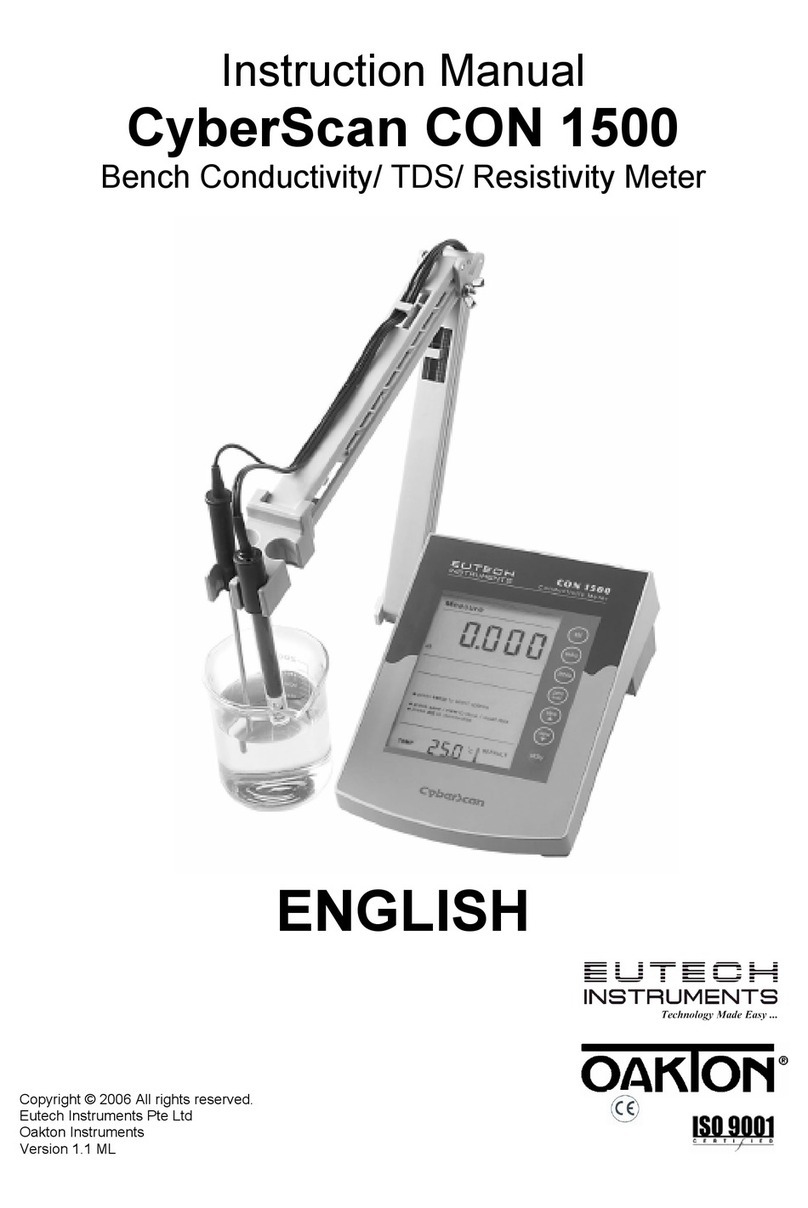
EUTECH INSTRUMENTS
EUTECH INSTRUMENTS CYBERCOMM PRO FOR CYBERSCAN CON 1500 instruction manual
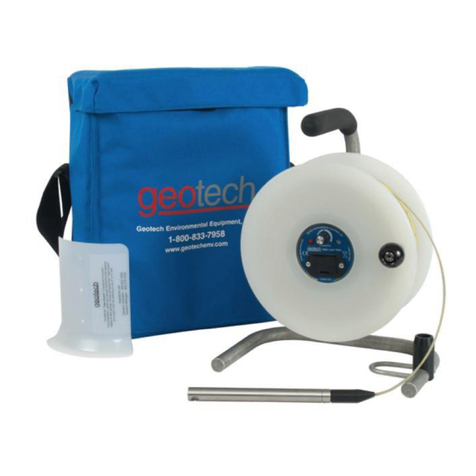
Geotech
Geotech ET WLM Installation and operation manual
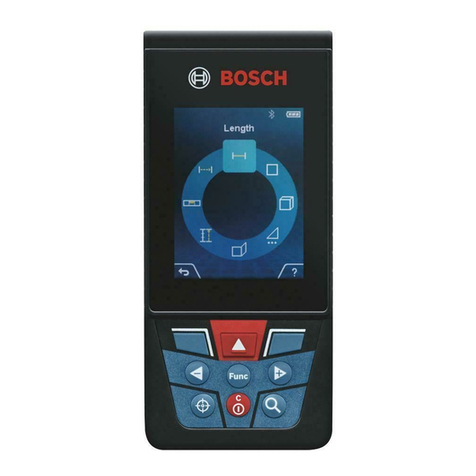
Bosch
Bosch GLM 150 C Professional Original instructions

AKO
AKO AKO-59720 instructions

Iridex
Iridex Cyclo G6 Operator's manual
